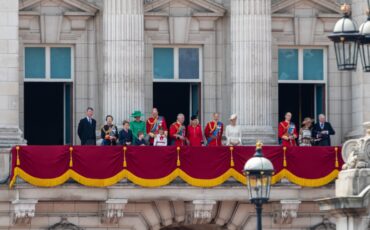Each year, Queen Elizabeth II takes part in the State Opening of Parliament where she delivers a speech written from the Throne in the House of Lords. The event “marks the formal start of the parliamentary year and the Queen’s Speech sets out the British government’s agenda for the coming session, outlining proposed policies and legislation. It is the only regular occasion when the three constituent parts of Parliament – the Sovereign, the House of Lords, and the House of Commons – meet.”
Traditions surrounding the State Opening of Parliament and the delivery of a speech by the monarch can be traced back as far as the 16th century. The current ceremony dates from the opening of the rebuilt Palace of Westminster in 1852 after the fire of 1834.
When is the State Opening of Parliament?
The State Opening of Parliament takes place on the first day of a new parliamentary session or shortly after a general election.
Typically held in May, many visitors to London will get the opportunity to see the Queen on her way to and from the Houses of Parliament. Escorted by the Household Cavalry, Her Majesty The Queen leaves Buckingham Palace in a carriage procession to the Houses of Parliament, which is lined by the three Services (Army, Navy, and RAF).
 Queen Elizabeth II and Prince Philip on Whitehall, on their way to the Houses of Parliament. Photo Credit: ©Crown Copyright.
Queen Elizabeth II and Prince Philip on Whitehall, on their way to the Houses of Parliament. Photo Credit: ©Crown Copyright.
What is the Processional Route for the State Opening of Parliament?
The State Opening of Parliament is the main ceremonial event of the British parliamentary calendar and normally attracts large crowds and a significant television and online audience. Below is the typical processional route for the State Opening of Parliament:
10:30 am: A Guard of Honour, of 104 men, is positioned in Queen’s Gardens and accompanied by the Band of the Regiment and the Corps of Drums of the Battalion. Additionally, the Processional Route is lined by service men and women.
10:37 am: The Crown Procession, consisting of 2 carriages with a Regalia Escort of the Household Cavalry, will leave Buckingham Palace. At the same time a Guard of Honour, of 104 men, is positioned at the House of Lords and accompanied by the Band of the Regiment and the Corps of Drums of the Battalion.
10:42 am: A Carriage Procession of HRH The Prince of Wales and HRH The Duchess of Cornwall accompanied by a Mounted Escort of the Household Cavalry Mounted Regiment will leave Buckingham Palace. Also, a Household Cavalry Mounted Regiment (Dismounted) will be in position on the staircase inside the House of Lords.
11:00 am: The Procession of Her Majesty The Queen, accompanied by The Sovereign’s Escort will leave Buckingham Palace.
11:08 am: The Kings Troop Royal Horse Artillery supported by the Band of the Royal Artillery, will be positioned in Green Park and will fire a Royal Salute of 41 Guns. The first round will fire as Her Majesty reaches the House of Lords.
12:00 pm: A Royal Salute will be fired by The Honourable Artillery Company at Her Majesty’s Tower of London.
12:15 pm: The Procession of Her Majesty The Queen will return to Buckingham Palace from the House of Lords by the same Processional Route followed by those of HRH The Prince of Wales and The Crown. Once Her Majesty has returned, The King’s Troop, the Sovereign’s Escort and Guard of Honour will March Past Her Majesty.
 Queen Elizabeth II and Prince Philip on Whitehall, on their way to the Houses of Parliament. Photo Credit: ©Crown Copyright.
Queen Elizabeth II and Prince Philip on Whitehall, on their way to the Houses of Parliament. Photo Credit: ©Crown Copyright.







Leave a Reply